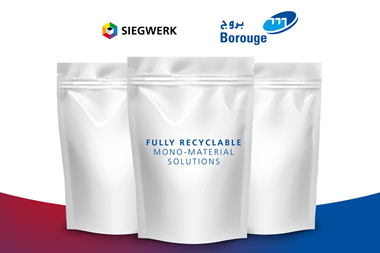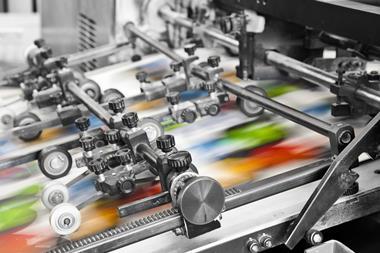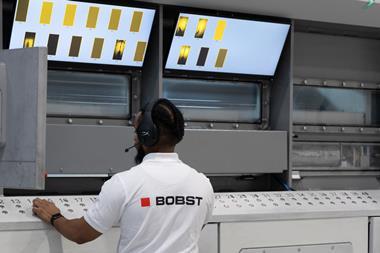
Bobst Group's experts explore the importance of aerators and pile turners in the printing and converting process.
In folding carton and corrugated plants the importance of having and aerator/pile turner is critical to the production of your die cutting equipment. More products than ever are produced, with throughput increasing every day. During a box producing process there are many hiccups that can occur - bad piles, sheets stuck together, different stock thicknesses within the pile, and so on. These machines help to overcome these potential issues.
Types of pile turner/aeratorOriginally, pile turners were used just for turning paper, but these days the machine can fulfil many additional tasks, including airing, dust removing and aligning. Now there are many different types of pile turner/aerators available, including: Portable load turnerPortable aerator and load turnerFloor mounted aerator and load turnerPit mounted aerator and load turnerManual, semi-automatic and automaticAdvanced systems integrated with existing printing presses, corrugator lines and die cuttersProgrammable aerators and load turners, storing repeat runs and settings.All can be integrated in line with modern printing presses, corrugator lines, laminators and all types of die cutting machines. So what are the main benefits of an aerator/pile turner within the converting process? Printing press operationOn average, printing presses today run 18,000 sheets and six pallets an hour. Some operations and printing presses require special pallets. For example, paper board from an external vendor usually arrives on wooden pallets, which need to be removed and replaced with plastic nonstop pallets. Loads can be damaged in transit and by the straps holding them together. With a load turner, damaged loads can be turned, aerated, bad sheets removed and the pallet changed. In advanced operations, the pallet-changing can be automated with pallet-storage and changing devices.
Flat die cutting operation In die cutting, load turners provide many benefits. It is imperative that these machines perform to their rated speed without stops, but feeder stops are common. Ink can be wet, coatings and especially UV coating can cause issues, with sheets often sticking together. Two sheets cannot be processed together - each time this happens, the feeder will stop for at least a few minutes. Imagine five stops an hour on a 9,000 sheets per hour machine. Each stop means approximately 15 minutes lost in total, which equals around 2,250 sheets lost, which, if we assume those finished sheets are worth just $1 dollar, means 2,250 invoiced dollars lost.
In this light, the return on investment on a pile turner is relatively quick. Loads coming from external vendors, on wooden skids, need to be changed out, preparing the load before die cutting. Aerating the load, separating the sheets and blowing the powder from printing out will eliminate feeder stops from sheets that are stuck together.
Corrugated operationCorrugators that laminate top sheets for printing can benefit from aerators and pile turners. The top sheets are usually very thin, which can make it difficult to get a good pile for feeding and laminating. Aerating helps for feeding.
With corrugated flexo printers which use vacuum transfer, the printing is done on the bottom of the board, and so the sheets are delivered onto a pallet with the printed side down. Some folding carton die cutters can cut corrugated board, but these must be cut printed side up. So the load needs to be turned and the pallet aligned - all of which is done by an aerator and pile turner. In addition, some corrugated printers deliver loads in batches - one batch printed side down and one batch printed side up – requiring an operator to manually turn all batches the same way. But with an aerator, it is not necessary to make a perfect load as the Aerator will quickly stack the sheets in the turner and make a good load when done. Repair of loadsLoads are often damaged in transit, whether from fork trucks, broken straps, broken pallets and so on. All this can be repaired with an aerator and pile turner. Simply place the load on the turner, rotate with a slight presser and let the machine work its magic. You can also take many smaller loads with pallets, stack them in a turner and rotate, then remove the pallets and combine them into one load.
Most of the solutions above relate to manual or semi-automatic aerators and pile turners. In advanced paper converting plants, there are more integrated systems. These involve moving of printed loads onto pallet conveyors on the storage lines, moving from storage lines into the aerator and pile turner where the pallets can be changed, and if necessary aerated before entering the feeder of the cutter. Empty pallets can be automatically removed and cycle to the end of the cutter for finished loads, all without human intervention. This saved valuable time and reduces machine stops, allowing you to maintain a profitable product flow of material.
More info:









